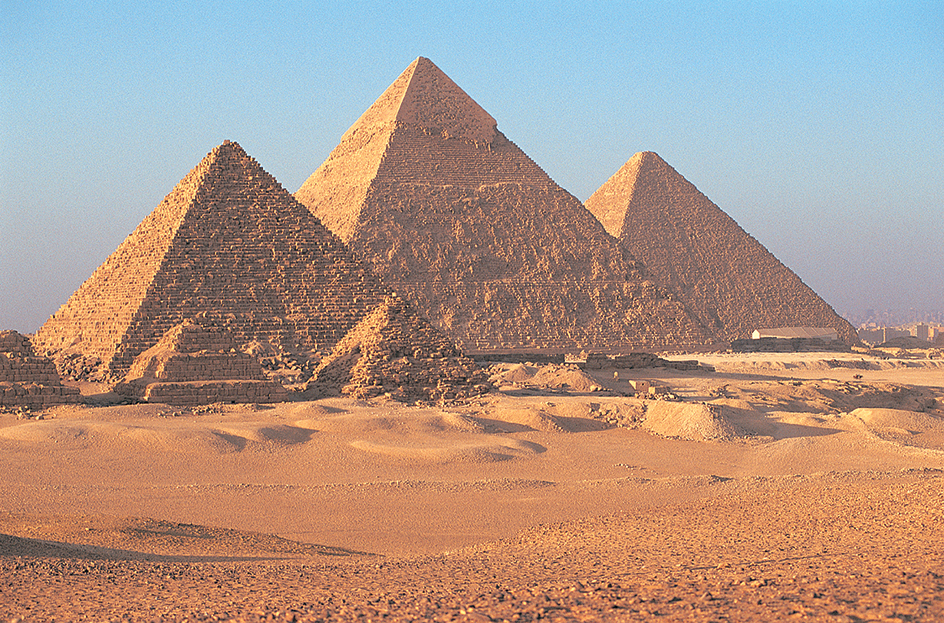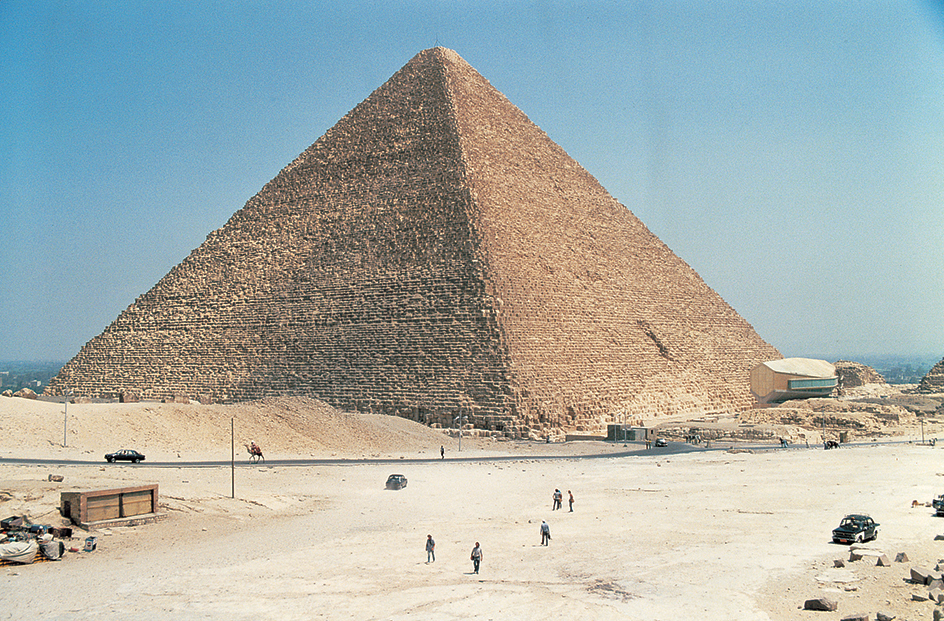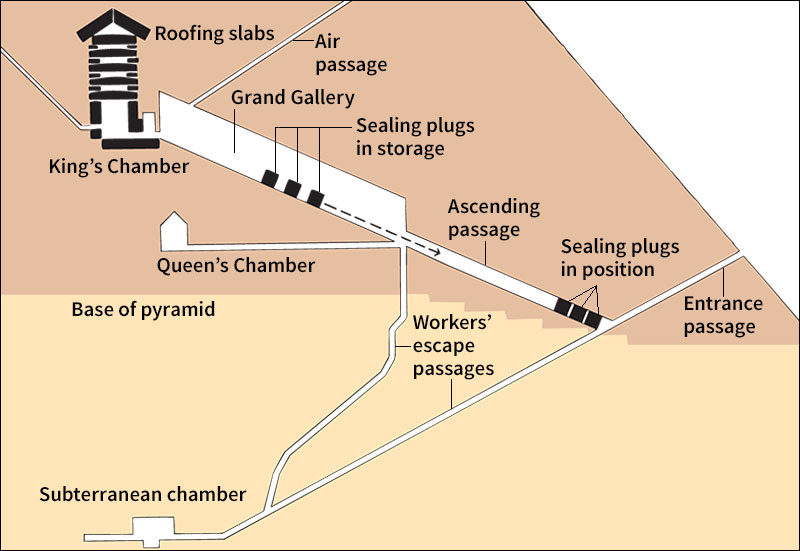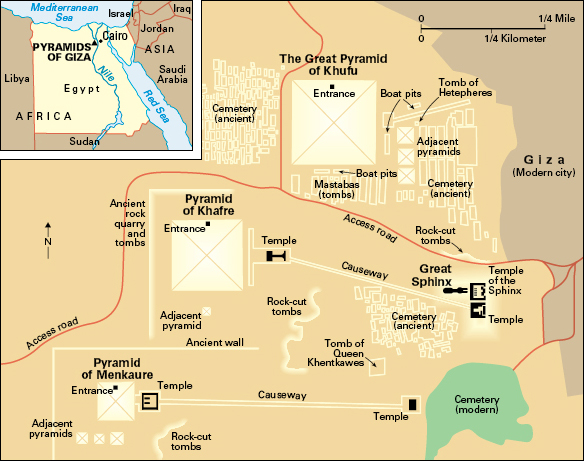Pyramids are large structures with square bases and four smooth, triangular-shaped sides that come to a point at the top. Several ancient peoples used pyramids as tombs or temples. The most famous pyramids are those built about 4,500 years ago as tombs for Egyptian kings. These Egyptian pyramids are among the Seven Wonders of the Ancient World.
Egyptian pyramids
The ruins of 35 major pyramids still stand near the Nile River in Egypt. Each was built to protect the body of an Egyptian king. The Egyptians thought that a person’s body had to be preserved and protected so the soul could live forever. The Egyptians mummified (embalmed and dried) their dead and hid the mummies in large tombs. From about 2700 to 1700 B.C., the bodies of Egyptian kings were buried inside or beneath a pyramid in a secret chamber that was filled with treasures of gold and precious objects.
Many scholars believe that the pyramid shape has a religious meaning to the Egyptians. The sloping sides may have reminded the Egyptians of the slanting rays of the sun, by which the soul of the king could climb to the sky and join the gods.
Funeral ceremonies were performed in temples that were attached to the pyramids. Most pyramids had two temples that were connected by a long stone passageway. Sometimes a smaller pyramid for the body of the queen stood next to the king’s pyramid. Egypt has at least 40 smaller pyramids that were used for queens or as memorial monuments for kings. The king’s relatives and officials were buried in smaller rectangular tombs called mastabas. These buildings had sloping sides and flat roofs.
The first pyramids.
Imhotep, a great architect and statesman, built the first known pyramid for King Zoser about 2650 B.C. Zoser’s tomb rose in a series of giant steps, or terraces, and is called the Step Pyramid. This pyramid still stands at the site of the ancient city of Memphis, at Saqqarah, near Cairo.

The first smooth-sided pyramid was built about 2600 B.C. It still stands at Meidum. It began as a stepped pyramid, and then the steps were filled in with casing stones to give the building smooth, sloping sides. Other pyramids built during a period of Egyptian history called the Old Kingdom (about 2650-2150 B.C.) can be seen at Abusir and Dahshur. During the Middle Kingdom (about 1975-1640 B.C.), pyramids were built at Hawara, Illahun, Lisht, and Dahshur—near what is now Cairo. The remains of these pyramids are still impressive.
The Pyramids of Giza


Loading the player...
Pyramids at Giza
A study of the Great Pyramid shows how these gigantic structures were built. The ancient Egyptians had no machinery or iron tools. They cut big limestone blocks with copper chisels and saws. Most of the stones came from quarries nearby. But some came from across the Nile River, and others came by boat from distant quarries. Gangs of men dragged the blocks to the pyramid site and pushed the first layer of stones into place. Then they built long ramps of earth and brick, and dragged the stones up the ramps to form the next layer. As they finished each layer, they raised and lengthened the ramps. Finally, they covered the pyramid with an outer coating of white casing stones. They laid these outer stones so exactly that from a distance the pyramid appeared to have been cut out of a single white stone. Most of the casing stones are gone now, but a few are still in place at the bottom of the Great Pyramid.


No one knows how long it took to build the Great Pyramid. The ancient Greek historian Herodotus said that the work went on in four-month shifts, with 100,000 workers in each shift. Scholars now doubt that account and believe that about 100,000 men worked on the pyramids for three or four months each year. Farm laborers built the pyramids. They worked on the tombs during periods when floodwaters of the Nile covered the fields and made farming impossible.
Thieves broke into most of the pyramids, stole the gold, and sometimes destroyed the bodies. Later Egyptian kings stopped using pyramids, and built secret tombs in cliffs. But some kings of the Kushite kingdom in Nubia, south of Egypt, built pyramids long after they were no longer used in Egypt.
American pyramids

The Moche Indians of Peru built large brick pyramids. The Temple of the Sun, near what is now Trujillo, on Peru’s northern coast, has a terraced brick pyramid on top of a stepped platform. The ancient Maya of Central America built pyramid-shaped mounds of earth with temples on top.

